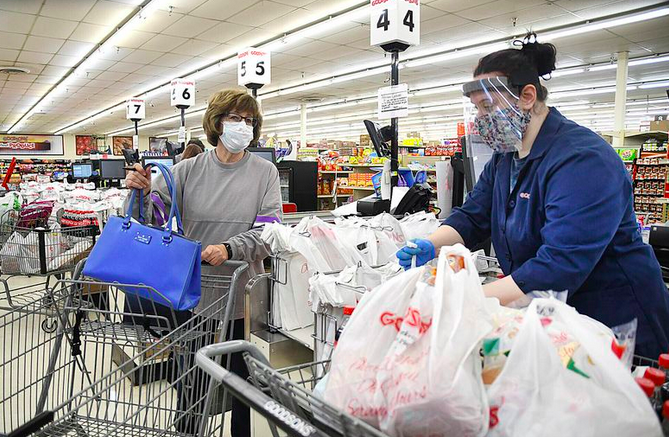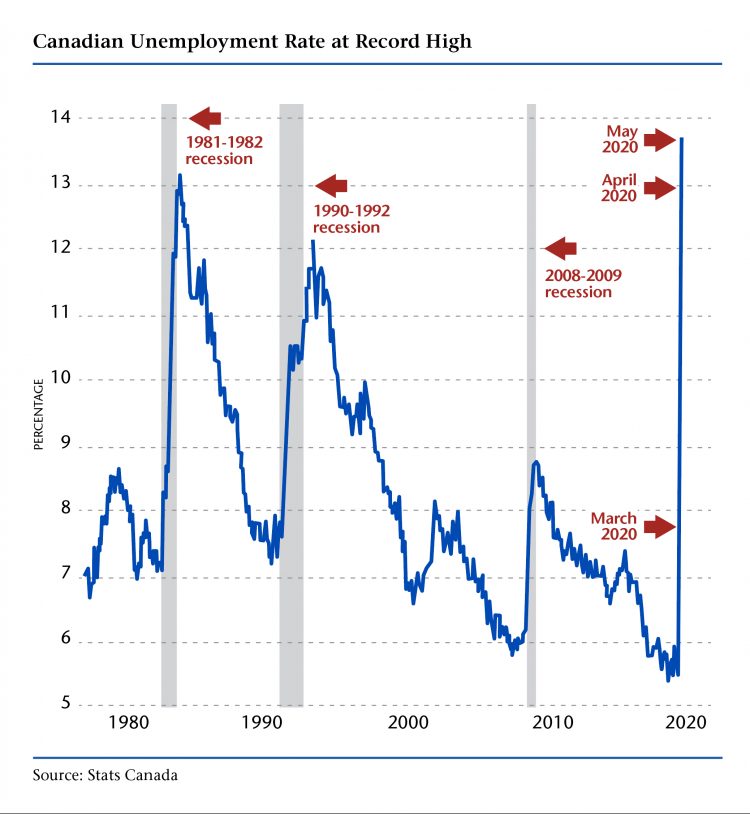COVID-19, Democracy and the Future of Work
The fourth industrial revolution had made work as we know it precarious before the pandemic. What will happen now?

AP
Lisa Van Dusen
May 12, 2020
One of the questions that arose in Washington in the immediate aftermath of the 2008 financial crisis was to what degree the crash would produce structural unemployment.
Because the disaster was man-made and corruption-driven, it was not fuelled by organic weaknesses in the U.S. economy and so did not produce either cyclical (reflecting the normal cycles of recession and growth) or frictional (post-university job searches, people changing cities) unemployment beyond the levels that would have existed without the force multiplier of a global market collapse.
At the time, the first decade and a half of the fourth industrial revolution had had a significant impact on how people worked, less so on where and for what price. The gig economy was brand new (the term was coined in the wake of the crash by former Vanity Fair editor Tina Brown in a January 2009 Daily Beast column). Many people now working at freelance rates, including in journalism, were then still working for actual salaries with benefits and reasonable income security.
 Structural unemployment is defined as that “resulting from industrial reorganization, typically due to technological change, rather than fluctuations in supply or demand.” The industrial reorganization resulting from the unprecedented technological change of the internet — including automation, robotization, digitization and the systematic redundancy of many meat space jobs and workplaces — was already well underway when the COVID-19 outbreak became a pandemic, followed by the only example of self-induced, widespread economic stagnation in history.
Structural unemployment is defined as that “resulting from industrial reorganization, typically due to technological change, rather than fluctuations in supply or demand.” The industrial reorganization resulting from the unprecedented technological change of the internet — including automation, robotization, digitization and the systematic redundancy of many meat space jobs and workplaces — was already well underway when the COVID-19 outbreak became a pandemic, followed by the only example of self-induced, widespread economic stagnation in history.
The pre-pandemic structural employment status quo was already tilting from uncertain to precarious, at least in terms of sustainability, a fact underscored by a range of experts including Bill Gates, who said in 2014 that “Technology over time will reduce demand for jobs, particularly at the lower end of skill sets… Twenty years from now, labor demand for lots of skill sets will be substantially lower. I don’t think people have that in their mental model.” His more recent rhetoric has been less alarmist, possibly because of the firestorm that prediction ignited. In 2017, McKinsey managing director Dominic Barton — then heading the Trudeau government’s advisory council on economic growth, now Canada’s ambassador to China — predicted that 40 percent of Canadian jobs could be lost to automation over the coming decade.
That pre-existing precariousness reflected a two-decade trend whereby technology-enhanced productivity and profits have been broadly valued above human livelihood and quality of life, partly due to the state capture of government legislative priorities by Big Tech and other industrial behemoths that has produced, among other deliverables, the decimation of unions. The pre-pandemic employment numbers did not reflect that relatively recent evolution in the practical implications of the words, “job”, “employment” and “career”.
This time, that puts the question of how much structural unemployment damage will be done by a crisis in a different context — more akin to the prognosis for a COVID-19 patient who already had a pre-existing chronic disease than the outlook for an otherwise healthy victim. The April jobs numbers everywhere reflect the predictable impact of a society in quarantine. How much of those pandemic unemployment rates, including Canada’s 13 percent, will turn out to be structural?
The answer lies in the unknowns of the degree to which economies are able to return to something approaching pre-pandemic activity before a confluence of massive fiscal outlays, protracted atrophy, a failure to contain the virus and depleted tax revenues generates a debt crisis. The odds of that happening depend on the X-factor of a virus that has, so far, been extraordinarily efficient at rationalizing worst-case scenarios.
In 2009, Barack Obama’s requirement for the American Recovery and Reinvestment Act that Joe Biden oversaw was that beyond the short-term, post-crisis remedial outlays, taxpayers’ money be spent on the industries and jobs of the future, both to secure sustainable livelihoods and foster innovation, especially in clean energy. The Recovery Act converted the financial crisis into an opportunity by investing more than $90 billion and leveraging another $150 billion for clean energy. As Dan Woynillowicz and Sarah Petrevan pointed out in a recent Hill Times piece, wind generation has tripled and solar has increased more than 80-fold since those investments.
There are ways to manage wicked problems and ways not to. That Obama’s successor is himself a wicked problem shouldn’t preclude leaders in Washington, Ottawa and elsewhere from anticipating and pre-empting disaster; there’s a difference between unintended consequences and unavoidable ones.
In 2017, when Barton predicted the economic toll of technology on our pre-pandemic calculations, his solution was an industrial strategy based on “inclusive growth”. For inclusive growth to prevail over productivity and profits, democracy will have to prevail over corruption and authoritarianism. That our current wicked problems are playing out against that clash should simplify, not complicate matters.
Lisa Van Dusen is associate editor of Policy Magazine and a columnist for The Hill Times. She was Washington bureau chief for Sun Media, international writer for Peter Jennings at ABC News, and an editor at AP in New York and UPI in Washington.
